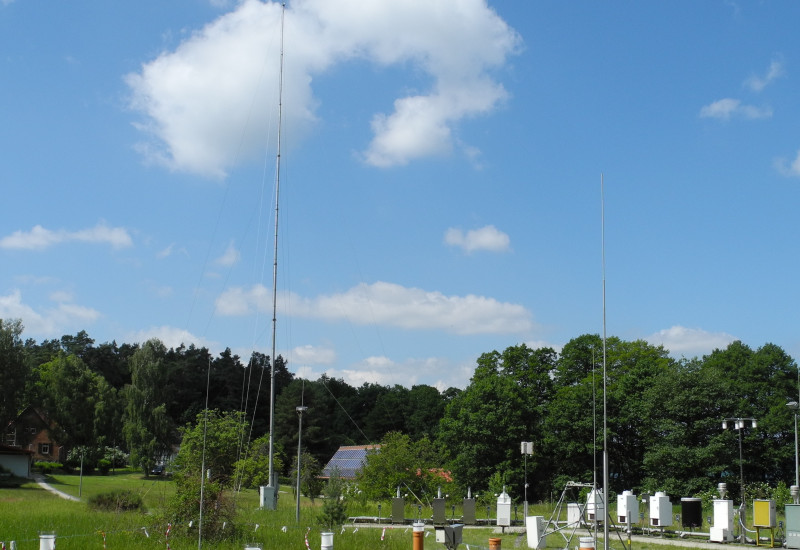The highest number of hot days averaged across Germany were recorded in 2003, 2015, 2018 and 2022.Despite considerable fluctuations between individual years, the overall trend is rising significantly.More hot days are expected during summer months in the coming decades due to climate change. read more
air
Umwelt-Indikator
Air
Cross-media monitoring in air quality management
The International Cooperative Programme on Integrated Monitoring of Air Pollution Effects on EcosystemsThe Integrated Monitoring programme monitors the effects of transboundary air pollutants on ecosystems at various sites throughout Europe. Comprehensive measurements are used to draw up water and material cycle balances on catchment scale. These detailed observations of cause-effect relationships... read more
Air
Lead in particulate matter
Lead is a toxic heavy metal and usually occurs bound to other substances. In ambient air lead is measured bound to particulate matter. read more
Air
Cadmium in particulate matter
Cadmium is toxic and cancerogenic. It belongs to the heavy metals and usually occurs bound to other substances. In ambient air arsenic is measured bound to particulate matter. read more
Air
Arsenic in particulate matter
Arsenic is toxic and can have metallic or non-metallic characteristics. It rarely occurs elementary but most of the time bound to other substances. In ambient air arsenic is measured bound to particulate matter. read more
KomPass: project on Climate | Energy
KLARA - Climate Change: impacts, risks, adaptation
KomPass: project on Climate | Energy
Adaptation and Climate (Project Area C, Biodiversity and Climate Research Centre (BIK-F)
Air
Heavy Metals in Particulate Matter (PM10)
Heavy metals in ambient air rarely occur elementary but most of the time bound to particulate matter. By inhalation health risks arise because some pollutants like arsenic, cadmium and nickel are classified to be cancerogenic.The European directive 2004/107/EC regulates the measurement and assessment of arsenic, cadmium and nickel in particulate matter (PM10). Lead in particulate matter... read more






